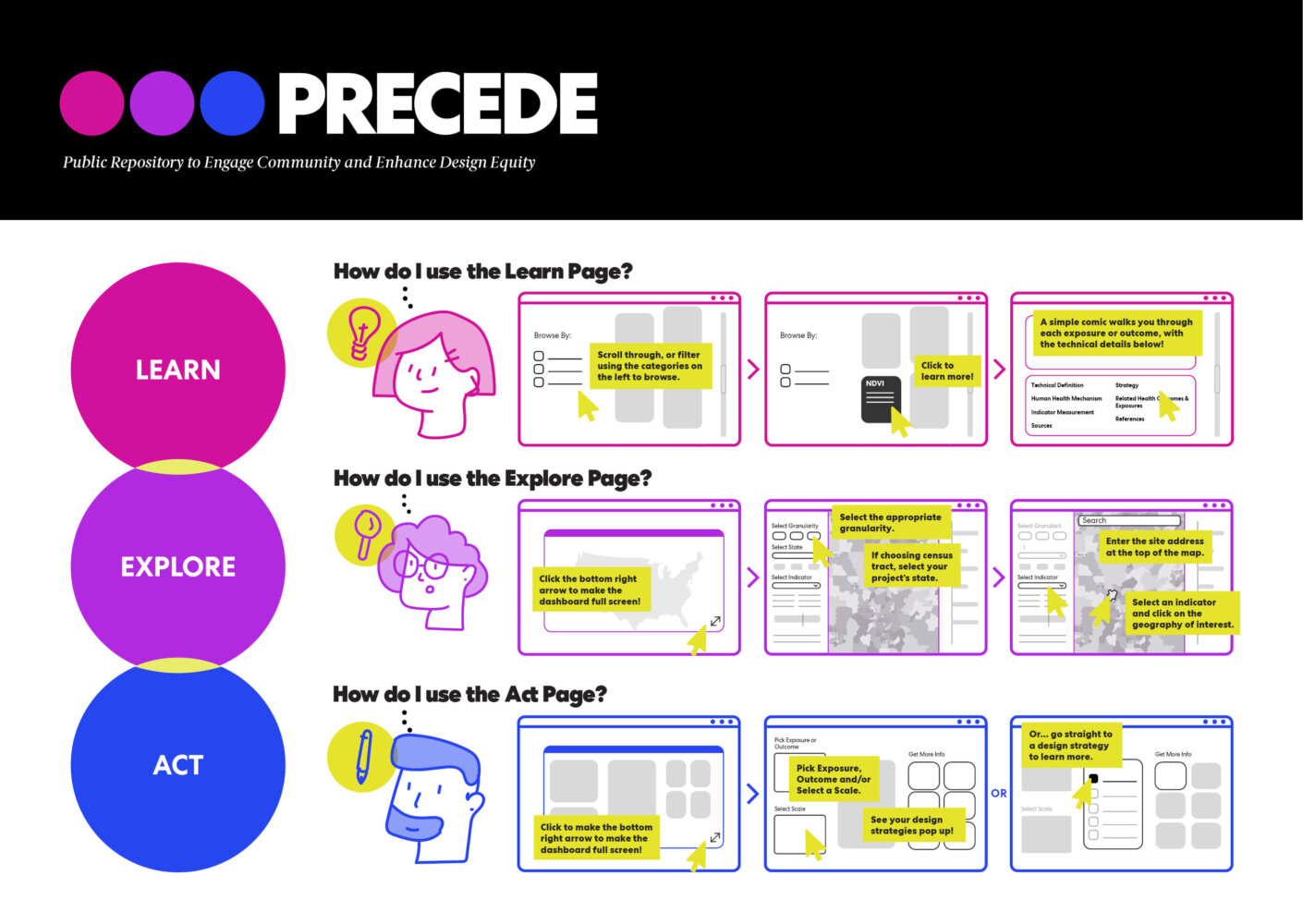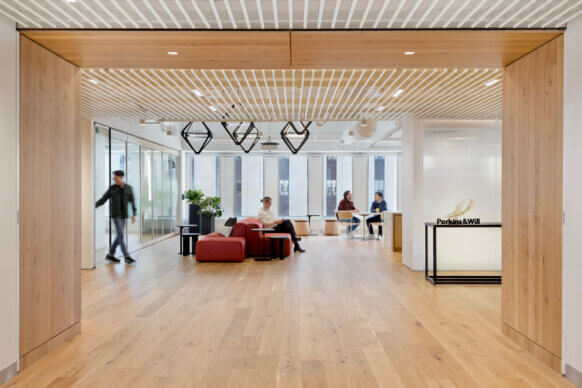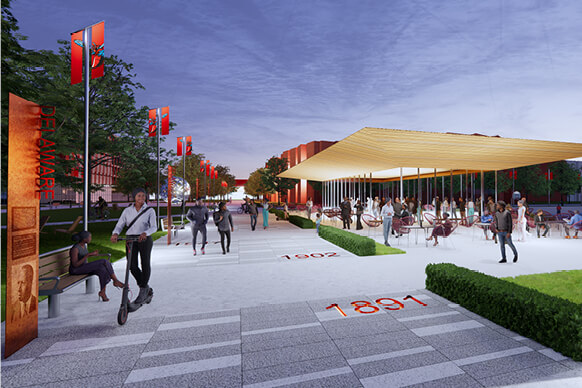Architecture and design firm Perkins&Will today unveiled a digital resource that allows architects and designers to access key public health data to inform their design decisions. The “Public Repository to Engage Community and Enhance Design Equity,” or PRECEDE, centralizes demographic, environmental, and health data from across the U.S. into a geospatial database, making it easier for designers to acquire insights that will empower them to create a healthier built environment.
The tool presents public health data as a percentile so designers can see at-a-glance which demographic factors, exposures, and outcomes are most relevant to their project. For example: What is the median income, proximity to traffic, or prevalence of cancer at a state, county, or census tract level in a selected location? What strategies can design teams use to mitigate these factors? PRECEDE provides educational resources and suggests actionable solutions based on these findings.
“Each community has a unique health context and requires a tailored health response,” says Dr. Erika Eitland, a public health scientist and co-director of the Perkins&Will Human Experience (Hx) Lab. “PRECEDE was built to advance restorative environmental justice by embedding public health priorities early into the design process. If every designer is a public health professional, then PRECEDE is an essential tool to advance the success of their design and support occupant health.”
Funded by a Transform Grant from the American Society of Interior Designers (ASID) Foundation, which was matched by Perkins&Will, PRECEDE underwent two years of testing and development prior to its launch today. The development was led by Eitland and a team of design practitioners and researchers, as well as interns from Harvard University’s T.H. Chan School of Public Health and Graduate School of Design, and Columbia University’s Mailman School of Public Health.






